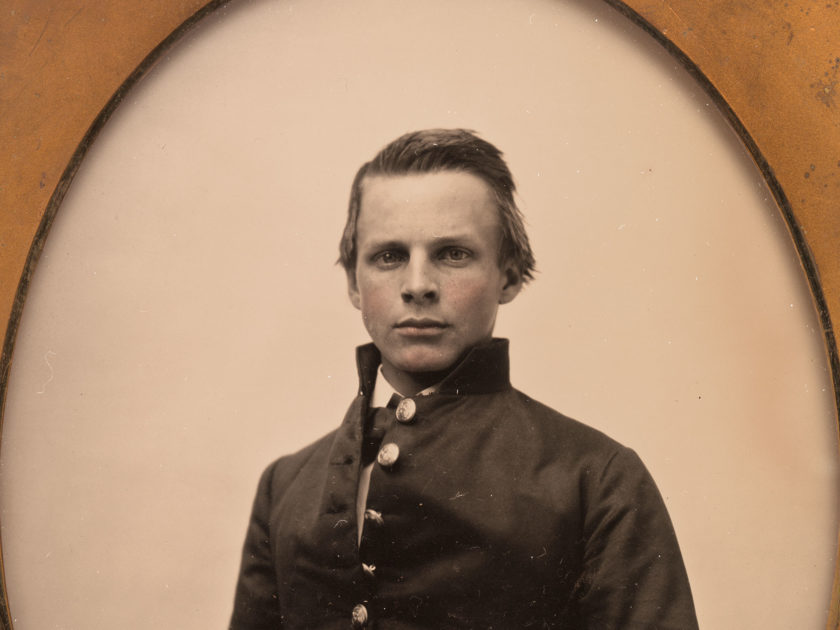Much has been written about John Pelham’s courage on the battlefield of Fredericksburg and his mortal wounding in the cavalry fight at Kelly’s Ford.
Far less has been recorded about his years at West Point. Letters by Pelham and his peers, examined by Jerry H. Maxwell in The Perfect Lion, reveal a young Alabamian who had his dream to graduate shattered by secession.
Pelham’s fierce determination to remain at the Academy after Abraham Lincoln won the 1860 presidential election was respected by many, both North and South. “Numerous cadets marveled at his restraint and general bearing in such troubled times,” notes Maxwell.

One of his fellow cadets, Adelbert Ames of Maine, recalled, “No one’s bearing under such circumstances was more wise, more discreet than John Pelham’s. What he instinctively claimed for himself he graciously conceded to others.”
In mid-December 1860, just a few weeks after the election, Pelham faced the stark realities of his unenviable situation. In a letter to his father on December 11, quoted by Maxwell, Pelham noted with deep disappointment, “I had hoped, fondly hoped, to graduate here. It would be exceedingly gratifying to me and I know to the family also for me to receive a Diploma from this Institution, but Fate seems to have willed it otherwise. I don’t see any honorable course other than tendering my resignation when Ala. leaves the Union, and offering my services to her. In this I did not wish to act precipitately, but in a manner worthy to myself, of my family and of my section of the country.”
On Jan. 11, 1861, Alabama seceded—exactly one month after Pelham wrote his father. Still, Pelham could not bring himself to resign from the Academy. He held steadfast until the bombardment of Fort Sumter left him and the few remaining Southern cadets without options. Finally, on April 17, Pelham resigned, and left for home and war.
On May 6, the remaining cadets graduated. One of the young men who earned his diploma that day was Ames, who went on to become a brigadier general in the Union army and receive the Medal of Honor.
Nearly 40 years after the war, as Blue and Gray veterans sought to bind the nation’s wounds, he wrote what might be Pelham’s finest eulogy.
“I am not disloyal when I tell you we heard with secret pride his gallant deeds on the field of battle. It was what we had a right to expect of him. He was our classmate for years; he was one of the best of us. Who should win honor and glory if not he? And we were deeply grieved when we heard of his death. He died as others of us died, in the heyday of hope and youth fighting each for his right.”
SPREAD THE WORD: We encourage you to share this story on social media and elsewhere to educate and raise awareness. If you wish to use any image on this page for another purpose, please request permission.
LEARN MORE about Military Images, America’s only magazine dedicated to showcasing, interpreting and preserving Civil War portrait photography.
VISIT OUR STORE to subscribe, renew a subscription, and more.

